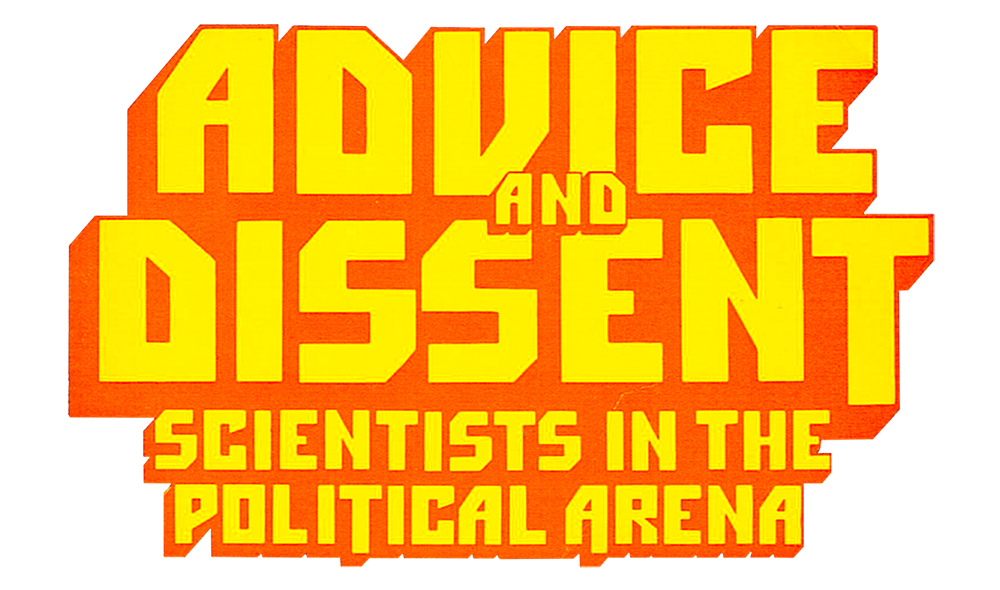Stan Ruby is cited in a 1974 book about political engagement by scientists
When Stan tweaked the elephant's leg: Book chapter about "the Argonne scientists"
Nuclear experts spoke out about the dangers of ABM missile systems
We felt like a mouse crowling up an elephant's leg with thoughts of assaulting the elephant. Well, maybe we didn't succeed in that, but we made the elephant twitch a little.
- Dr. Stanley Ruby, physicist at Argonne National Laboratory and president of the Chicago Chapter of the Federation of American Scientists
So is our father quoted in Chapter 13, "Stopping Sentinel," in the 1974 book "Advise and Dissent: Scientists in the Political Arena," by Joel Primack & Frank von Hippel.
The elephant he was referring to was essentially the "military industrial complex," which was then in process of planning the deployment of defensive nuclear missiles near to major U.S. cities.
According to the article, it was John Erskine of the Argonne group who in October 1968 first picked up word of a U.S. Army plan to build a missile base on farm land in the west suburban town of Westchester.
The group of anti-armament physicists at Argonne, including Stan, was already well organized, and it immediately swung into action:
George Stanford estimates that he personally participated as a speaker or debater on at least thirty occasions and that three others—David Inglis, John Erskine, and Stan Ruby—were about equally active. In all, ten Argonne people made one or more speeches against the ABM.
They spoke at community meetings and engaged with the media. It must have been during this period immediately after the 1968 presidential election and March 1969, when President Nixon withdrew the Sentinel program, when Stan appeared on the Kup show.
As for his contact with reporters, it seems he was one of the Argonne group who tipped off the Chicago papers to their first reporting on the issue. I have a personal memory, however, of Dad returning from a trip to New York, disappointed that he couldn't get the New York Times to run a story.
There is a lot more information here to parse to truly understand the small part Stan Ruby played in successfully opposing a major military weapons system. I hope to come back to this book chapter and other sources on the subject.
For now, I wanted to provide the link to the book chapter so you can read it for yourself.

